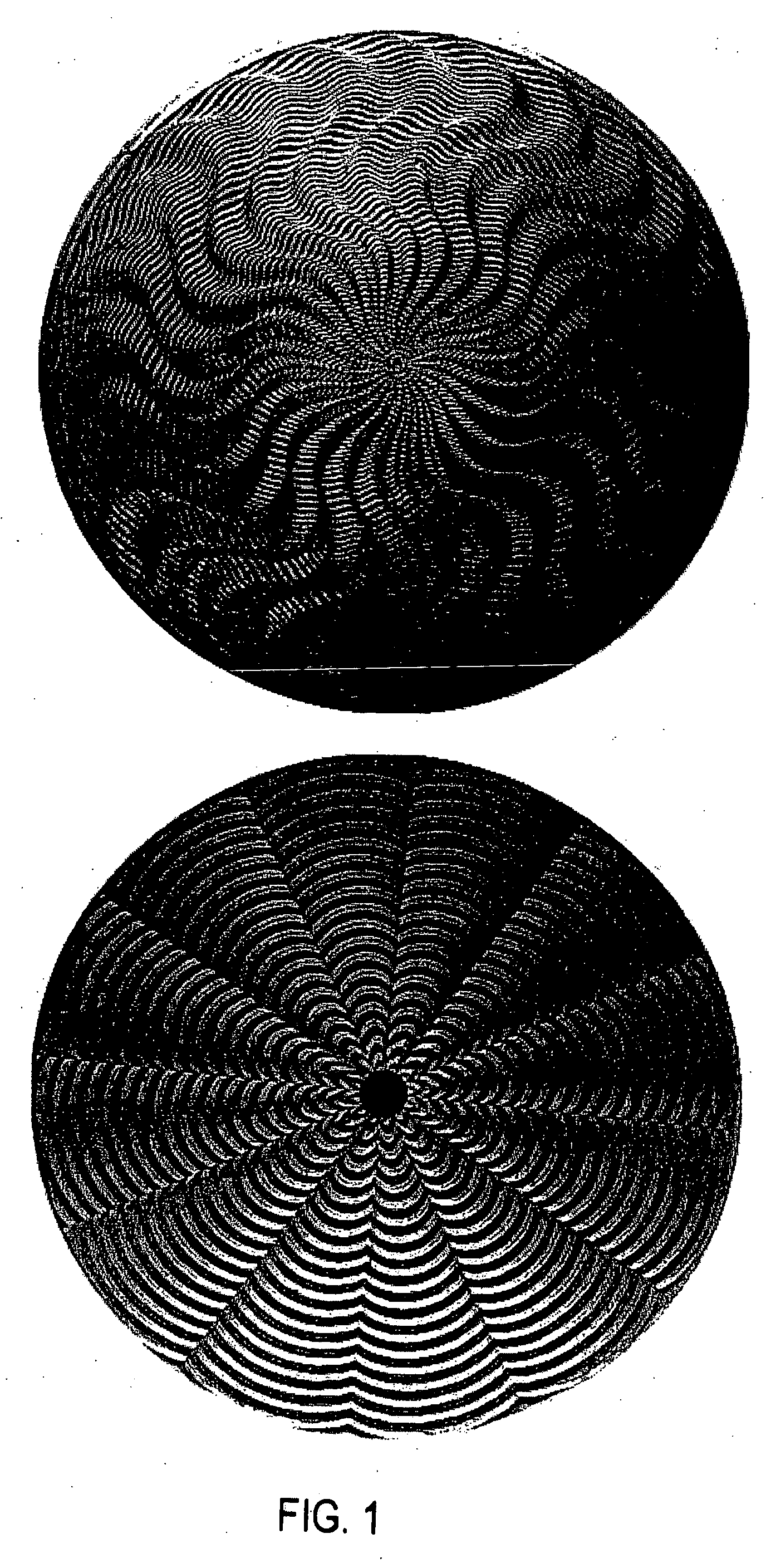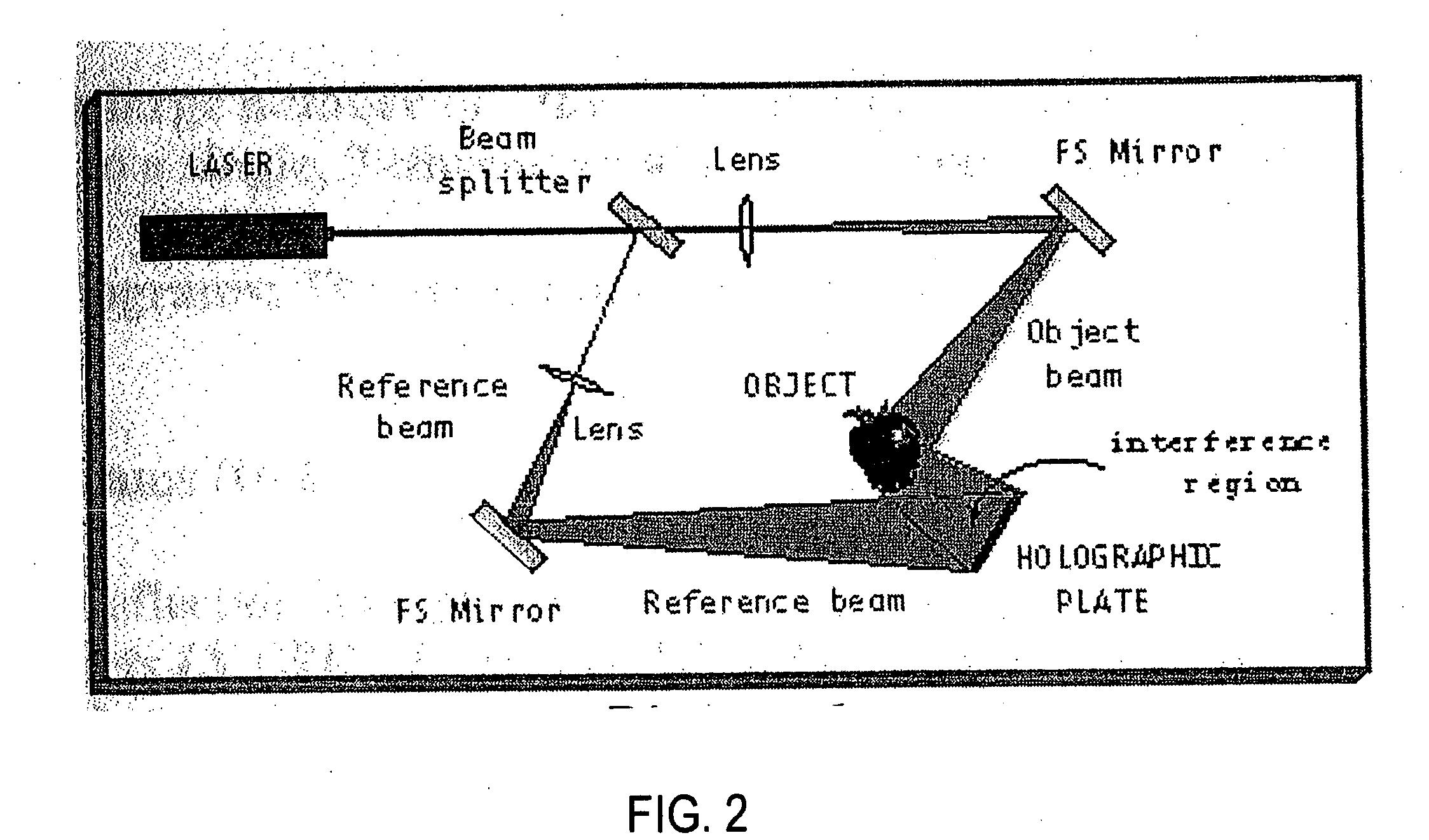Method for producing printed image having 3-dimensional appearance
a printing image and 3-dimensional technology, applied in the field of printing techniques, can solve the problems of guilloche decorating, time-consuming and expensive process, and the cost of molding, embossing, etching and engraving to decorate an article is usually much more expensive than the most available printing technique,
- Summary
- Abstract
- Description
- Claims
- Application Information
AI Technical Summary
Benefits of technology
Problems solved by technology
Method used
Image
Examples
Embodiment Construction
[0033] The present invention provides a method for producing printed images having a textured and / or three-dimensional appearance using aspects of standard printing techniques. The appearance of these printed images simulates and in some cases approaches the appearance created by the more expensive and time-consuming engraving, embossing, stamping and holographic processes described above. But, by utilizing some of the techniques found in known printing processes, the method of the present invention can be used to create similar decorative images on articles at mass production rates and at a fraction of the cost.
[0034] The first step in the printing method of the present invention is to create a graphic design composed of very fine lines and spaces. The lines may vary in width and have a width between about 0.002 to 0.010 inches, and more preferably between about 0.003 to 0.007 inches. The spacing between lines is between 0.002 to 0.010 inches, and more preferably between 0.003 to ...
PUM
 Login to View More
Login to View More Abstract
Description
Claims
Application Information
 Login to View More
Login to View More - R&D
- Intellectual Property
- Life Sciences
- Materials
- Tech Scout
- Unparalleled Data Quality
- Higher Quality Content
- 60% Fewer Hallucinations
Browse by: Latest US Patents, China's latest patents, Technical Efficacy Thesaurus, Application Domain, Technology Topic, Popular Technical Reports.
© 2025 PatSnap. All rights reserved.Legal|Privacy policy|Modern Slavery Act Transparency Statement|Sitemap|About US| Contact US: help@patsnap.com



